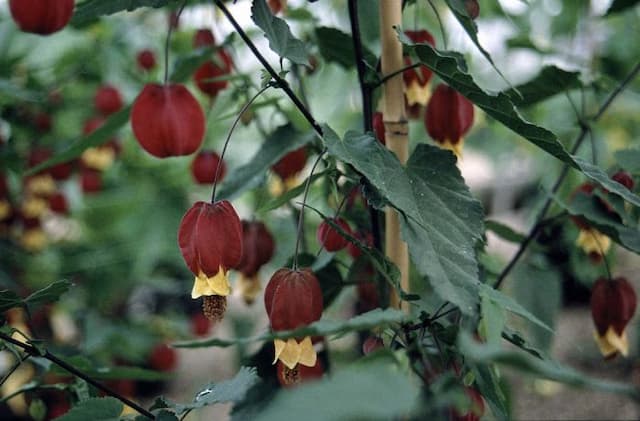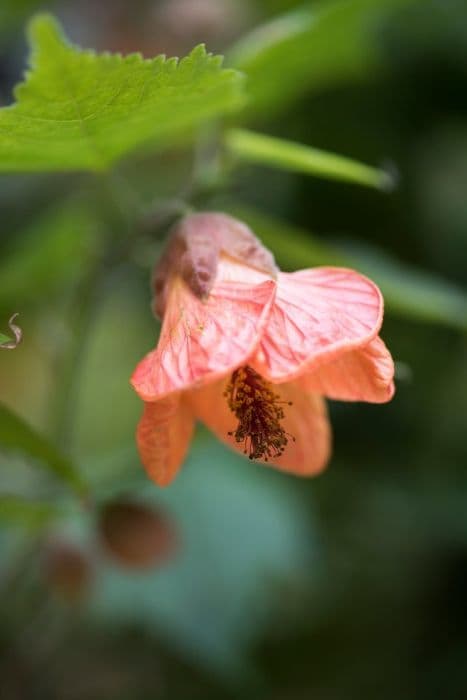Tree mallow Lavatera maritima



ABOUT
Lavatera maritima is an abundant herbaceous perennial that is native to the Mediterranean region.
It has a strong root system with almost woody stems that can grow up to 6 feet in height. Its roots and stems are light green with a slightly woolly texture.
The leaves are usually green and heart-shaped with a paler midrib, and measure up to 12 inches in length and 8 inches in width. The serrated edges of the leaves give the plant a soft, attractive appearance.
The flowers of Lavatera maritima are hermaphrodite and have 5 petals. The petals are pink to purple in color, often with white veins and around 0,3 inches in diameter.
The stamens and stigmas are yellow and the flowers form dense clusters of up to 15 per stem. The fruit is a ovoid follicle that can reach up to 0.8 inches in length, and contains up to 8 dark-brown seeds.
About this plant
 Names
NamesFamily
Malvaceae
Synonyms
Tree mallow, Malva bicolor
Common names
Lavatera maritima, Lavatera bicolor, Lavatera maritima bicolor, Lavatera 'Maritime', Lavatera maritima
 Toxicity
ToxicityTo humans
Lavatera maritima is not toxic to humans. It poses no risk of poisoning and can be grown safely in gardens. However, as it contains calcium oxalates, it can cause various unpleasant symptoms such as nausea, vomiting, drooling, and others.
To pets
It is not considered toxic to animals and may cause problems for animals if eaten in large quantities. For example, these plants contain unhealthy amounts of calcium oxalates that can lead to irritation of the gastrointestinal tract.
Symptoms of ingestion may include drooling, abdominal pain, vomiting, and diarrhea.
 Characteristics
CharacteristicsLife cycle
Perennials
Foliage type
Deciduous
Color of leaves
Green
Flower color
Shades of pink
Height
Up to 5 feet
Spread
Up to 3 feet
Plant type
Herb
Hardiness zones
6
Native area
Mediterranean
Benefits
 General Benefits
General BenefitsLavatera maritima is a popular ornamental plant, providing attractive green foliage and beautiful pink or white blooms that can be enjoyed in the garden.
This plant is highly adapted to withstand a wide range of conditions, tolerating a variety of temperatures, climates, and soil types.
Lavatera maritima can attract a variety of pollinators, such as butterflies, bees and hummingbirds, to help control pests, increase pollination and enhance the beauty of the garden.
This plant requires very little maintenance, making it easy to grow and maintain in the home garden.
Lavatera maritima is highly resistant to many common plant diseases, such as powdery mildew, gray mold, and downy mildew, making it an ideal choice for gardeners seeking to avoid chemical treatments.
Lavatera maritima can be used in a variety of culinary dishes, adding a mild, sweet flavor to salads, soups, and other dishes. Medical Properties
Medical PropertiesStudies have shown that Lavatera maritima extract exhibits strong antimicrobial activity against pathogenic bacteria, such as Escherichia coli (E. coli) and Staphylococcus aureus.
The plant contains anti-inflammatory compounds that have been used to treat common conditions such as arthritis, joint pain and skin issues such as psoriasis.
Lavatera maritima contains carotenoids, flavonoids and phenolics, making it a useful agent for healing wounds. It also contains substantial amounts of vitamin C which acts to soothe and heal damaged skin.
he plant has been used to treat urinary tract infections and other conditions that lead to high urinary tract pressure. Its diuretic properties also help flush out toxins and excess water from the body.
Lavatera maritima appears to have immunomodulating properties and has been found to help regulate the immune system and boost overall health. Air-purifying Qualities
Air-purifying QualitiesLavatera maritima has been found to be effective in air purification due to its high level of volatile organic compounds (VOCs) absorption, particularly in terms of xylene, ethylbenzene, and toluene. Lavatera maritima's absorption of VOCs also reduces the risk of VOC-related illnesses and respiratory problems.
 Other Uses
Other UsesThe thick, heavily branching stems and deep roots of Lavatera maritima make it an effective tool for controlling soil erosion and stabilizing soil in areas where wind and water can erode the land.
Its fluffy, flower-filled stems can be used as mulch in gardens, providing a decorative and protective layer of insulation around the soil.
Its showy blooms, versatility and easy care make Lavatera maritima an ideal choice for flower beds, borders, wildflower meadows and cut-flower arrangements.
It is a high-protein fodder source for livestock, providing nutritious grazing that can help owners of livestock keep their cows and sheep healthy and content.
Its deep root system allows Lavatera maritima to tolerate some periods of mild droughts, and its abundant flowers bring a sense of color and life to arid areas.
Interesting Facts
 Feng Shui
Feng ShuiLavatera maritima is considered to have strong beneficial qualities in Feng Shui. It can be used to bring luck, physical endurance, and mental clarity.
To use Lavatera maritima in Feng Shui, it is recommended to place a bouquet of the flowers on one's desk or workspace to bring in good energy and to promote healthy work habits. Additionally, keeping a plant of the Lavatera maritima near a main entrance of the home is said to bring luck and protection.
Lastly, placing some of the Lavatera maritima flowers in a bedroom is thought to bring healing and relaxation. Zodiac Sign Compitability
Zodiac Sign CompitabilityLavatera maritima is a hardy plant that is known for its resilience and ability to withstand harsh conditions. As such, it may be associated with earth signs like Taurus, Virgo, and Capricorn, which are known for their practicality, stability, and groundedness.
 Plant Symbolism
Plant SymbolismLavatera maritima represents resilience and joy, as it blooms even in the salty air of its coastal habitat. Its beautiful sky-blue flowers bring to mind the anthematic images of a beach and are seen as a reminder to embrace life’s joys and to accept the challenges that come with it.
The expansive blooms also represent a sense of unbounded freedom that can come from sailing on the open seas. The long stems are a reminder to hold on to the joys of life, even when one is faced with tumultuous waters.
 Water
WaterLavatera maritima is a low-maintenance shrub that should be watered deeply at least once each week.
To properly water, water the base of the plant with a slow, steady stream of water for about 10 minutes until the soil is completely saturated. The soil should be consistently moist, but not sopping wet, so allow it to dry out in between watering.
During periods of extreme heat and drought, deep watering 2-3 times per week may be necessary. Make sure to check the soil frequently; it should look and feel moist, but not soggy. Light
LightThe best light conditions for Lavatera maritima are full sun, meaning 6-8 hours of direct sunlight per day.
For the best spot for the plant, an area that receives direct sunlight for most of the day and is protected from strong winds is ideal. Temperature
TemperatureIn the summer, Lavatera maritima enjoys temperatures between 65-85°F and in winter highs should be around 55-65°F.
 Pruning
PruningTo prune Lavatera maritima, use sharp pruning shears or loppers to cut off dead, diseased, damaged or undesirable branches. T o maintain the desired shape, prune right after flowering in the spring and again in the late summer or early fall. Pruning back more than one-third of the plant at a time is not recommended.
 Cleaning
CleaningAs needed
 Soil
SoilFor the best soil for Lavatera maritima use 2 parts loam soil, 2 parts peat moss, 1 part potting soil, and 1 part sand. Mix until the ingredients are evenly distributed.
Maintain a pH between 5.6 and 7.0 for optimal growth. Repotting
RepottingLavatera maritima should be repotted every 1-2 years.
 Humidity & Misting
Humidity & MistingThe best humidity conditions for Lavatera maritima is 50-60% relative humidity.
To increase the humidity when necessary, misting and standing plants on pebble-filled trays of water can help increase humidity levels.
To decrease the humidity when necessary, using a dehumidifier or running a fan near the plant can help reduce the humidity. Suitable locations
Suitable locationsIndoor
Lavatera maritima thrives best in an area that receives full sun, with constant temperatures between 60-70 degrees Fahrenheit and has plenty of airflow. It should be planted in a pot that is at least 6-8 inches deep with well-draining soil that stays lightly moist.
Outdoor
Lavatera maritima grows best outdoors when temperatures range from 65-80 degrees Fahrenheit, receiving full, direct sunlight throughout the day. The soil should be well-drained and sandy, and the plant should be planted at least 10-12 inches deep. Water regularly and keep the soil moist.
Hardiness zone
7 - 10 USDA
 Life cycle
Life cycleThe Lavatera maritima lifecycle begins in the spring, when the plant begins to produce new shoots. As temperatures rise, the plant sends up new flowers and leaves.
In the summer months, the plant blooms continuously and forms buds that later open up to reveal magnolia flowers. As summer progresses, the plant produces seeds that will eventually be released in fall.
In the fall, Lavatera maritima enters its dormancy period. During this time, the leaves and flowers will die and the plant will start to grow dormant. The lowest ideal temperature for the plant is 50°F. As temperatures drop, the plant will slow down its activity and eventually become dormant. It will not resume activity until temperatures rise again in the spring months. Propogation
PropogationPropogation time
Spring - fall
Seed:
Lavatera maritima seeds should be planted in spring or early fall when the temperature is above 50°F. Plant the seed outdoors after the danger of frosts has gone in a well-drained soil in a sunny spot.
Cuttings:
Softwood cuttings taken from the current year’s growth can be taken in early summer for propagating Lavatera maritima. Take 2-3 inch segments of non-flowering shoots and place them in a tray of well-draining potting soil. Place in direct sunlight and keep the soil lightly moist. Roots will form in 4-6 weeks and the cuttings can be transplanted outdoors in fall when the temperature is consistently above 50°F.
 Pests
PestsSpider mite, Whitefly, Aphid, Slugs and snails
 Diseases
DiseasesPowdery mildew, Leaf spot, Rust









